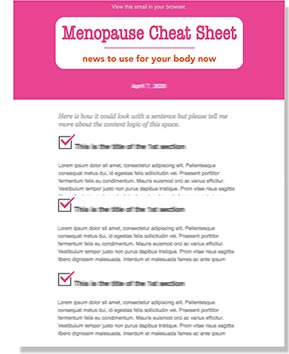WATCH THE CONVERSATION WITH JOYCE SHULMAN, AUTHOR OF ‘WHY WALK?’
AND FOUNDER OF 99WALKS, HERE.
In a world filled with high-intensity workouts, cutting-edge fitness trends, and expensive gym memberships, we often overlook one of the most accessible and powerful forms of exercise: walking. It’s a simple activity that has the potential to transform your health, especially during midlife. In this blog post, we’ll explore the wealth of research and statistics that highlight the physical and mental benefits of walking, with a special focus on women in midlife.
The Decline in Walking and Its Consequences
Before we dive into the incredible benefits of walking, it’s essential to address an alarming trend: the decline in walking in recent years, which has been exacerbated by factors like remote work. According to a report by the mobility data company Streetlight Data, the national annual average of daily walking trips in the U.S. fell by a staggering 36% from 2019 to 2022. Some cities and states witnessed a drop in walking trips ranging from at least 29% fewer trips to as much as 55% fewer trips over this three-year period.
The consequences of this decline in walking are profound. It affects our overall health and well-being, particularly for women in midlife who may face unique health challenges. However, there is a beacon of hope – the simple act of walking.
The Physical Benefits of Walking for Women in Midlife
Research has shown that walking offers a plethora of physical benefits, making it an ideal exercise for women in midlife. Here are some key statistics and findings:
- Cardiovascular Health: Walking is a low-impact exercise that can significantly improve cardiovascular health. A study published in the American Journal of Preventive Medicine found that women who walked briskly for at least three hours per week had a 35% lower risk of heart disease.
- Weight Management: For women facing weight-related challenges during midlife, walking can be a game-changer. The National Walkers’ Health Study found that women who walked regularly were able to maintain a healthy weight more effectively.
- Bone Health: Midlife often comes with concerns about bone health and osteoporosis. Walking, especially when combined with strength training, can help maintain bone density. A study in the Journal of Bone and Mineral Research revealed that postmenopausal women who walked for at least 30 minutes a day had a lower risk of hip fracture.
- Mood and Mental Health: The benefits of walking extend beyond the physical realm. A study published in JAMA Psychiatry reported that walking for about 35 minutes a day can significantly reduce the risk of developing depression in midlife women.
- Cognitive Function: As women age, maintaining cognitive function becomes increasingly important. Research in the British Journal of Sports Medicine found that regular walking is associated with improved cognitive performance and a reduced risk of cognitive decline.
Setting Goals and Staying Motivated
Now that we’ve seen the compelling statistics on the physical benefits of walking, how can women in midlife make walking a consistent part of their routine? The key lies in setting achievable goals and staying motivated. Experts recommend starting with shorter walks and gradually increasing duration as fitness improves. Setting personal goals and tracking progress can serve as powerful motivators.
The Community and Accountability of Walking
Walking offers more than just physical benefits; it can also build a sense of community and accountability. Many women find that group walks or walking with friends not only make exercise enjoyable but also combat feelings of loneliness that can be common during midlife.
Incorporating movement into daily life and relationships is a powerful way to stay connected and inspired. Even solo walks can become moments of self-discovery and reflection.
Walking, as it turns out, is not just a stroll in the park; it’s a dynamic tool for women in midlife to enhance their physical and mental well-being. The statistics and research are crystal clear: walking can improve cardiovascular health, aid in weight management, strengthen bones, boost mood, and sharpen cognitive function. It’s a versatile and accessible exercise that can be tailored to individual needs and goals.
So, if you’re a woman in midlife looking to thrive in the years ahead, lace up your sneakers, plug in your earbuds, and listen to this incredible conversation with Joyce Shulman, founder of 99Walks and author of “Why Walk?” and you will be taking the first step towards a healthier, happier you.
































































